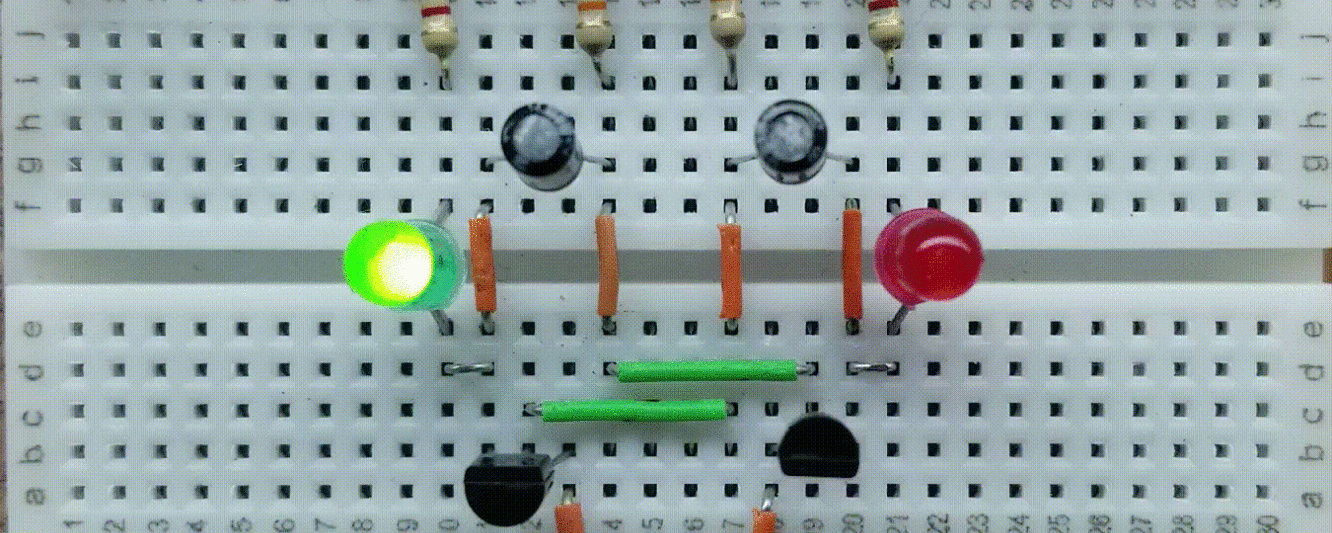Intro An H-bridge is simply a configuration of switches that are oriented in a way so as to control or reverse the polarity to a load. As shown in the picture, the switches allow you to orient the polarity to the motor by simultaneously closing S1 and S4 for a left side positive polarity, or simultaneously closing switches S2 and […]
MP710087 Programmable Linear Power Supply Review
Overview The Mulitcomp Power Supply is an affordable adjustable/programmable 60VDC, 3A linear power supply. It is very useful if you want precision (down to 1mV and 1mA) control of voltage and current when performing electronic design, prototyping, or other functions where such resolution is desired. You can directly program the target values before activating the output. Once you’re ready, you […]
Op Amp Single Supply Oscillator Circuit on a Breadboard
What is an Op Amp Oscillator? An op amp oscillator is an amplifier that uses feedback and resulting hysteresis to cause oscillation. The circuit only requires five components. The output will be a square wave – the frequency of which is determined by a resistor and capacitor. This circuit is configured for 1kHz. The hysteresis() is determined by the value […]
5V/USB Transistor Soft Latch
This article describes the 5V version of a previous 12V transistor soft latch push on, push off switch circuit. It also incorporates an improvement over the 12V version that provides for better switch de-bouncing, as well as an inverting output stage, so that the circuit defaults to “off”. The parts list and picture of the breadboard can be found in […]
BJT Logic Gates
This article describes how Bipolar Junction Transistors can be easily configured to act as logic gates when used in their “on” and “off” states. Five popular logic gate types will be described and constructed in this article and accompanying video. The five types are the: Inverter (or NOT) gate AND Gate NAND Gate OR Gate NOR Gate TTL Logic Levels […]
Current Mirror using Transistors
What is a Current Mirror? A current mirror is a circuit that takes the current through one load and “copies” it through a load on another branch of the circuit. The current mirror also provides a constant current source through that target load. BJT (Bipolar Junction Transistor) Current Mirror Design Basic Configuration The basic configuration for the BJT current mirror […]
Transistor Push-on, Push-off Switch
Build a Transistor Toggle (push-on, push-off) Switch on a Breadboard What is a Push-on, Push-off Switch? The circuit described in this article is the equivalent of a latching push-button switch. So when you press it once, it is on and press it again, it is off. This electronic equivalent of a latching push-button is accomplished by a two-transistors and a […]
Constant Current Source
What is a Constant Current Source? The constant current source is a an important function in not only practical electronics, but also in circuit analysis. It provides a constant current regardless of the voltage drop that appears across it. This is also referred to as an “independent” current source. This is differentiated from a “dependent” current source, which has a […]
How Transistors Work
Bipolar Junction Transistor (BJT) Overview, Operating Modes, Switches, and Relay Driver Circuits Supplies Needed (if you’d like to build the following circuits) BJT Overview The BJT or bipolar junction transistor is a 3-terminal semiconductor device that can be used amplify current. The three terminals are the emitter, the base, and collector. The BJT is primarily used in three operating modes: […]
How to light an LED
Considerations when Lighting an LED There are two primary considerations for lighting an LED. LED Polarity LED current LED Polarity LEDs are diodes – and diodes only pass current in one direction. Therefore, if you hook an LED up backwards, it won’t light, and can even be damaged. Below is the schematic symbol for an LED. Note the direction of […]
